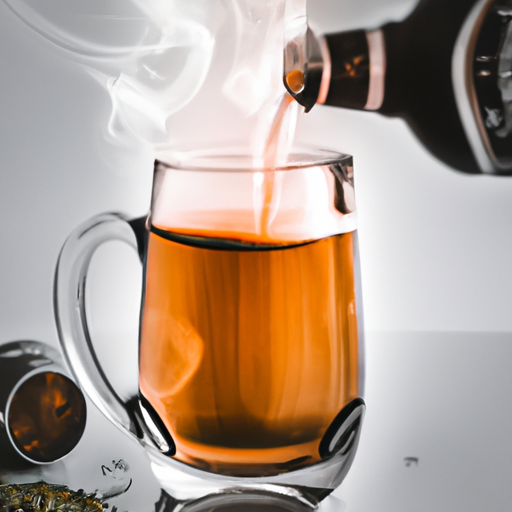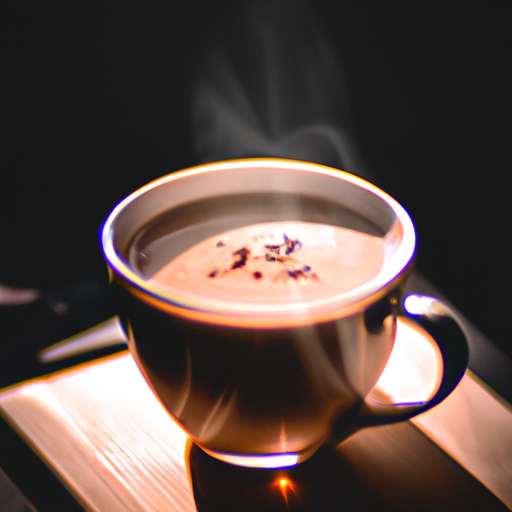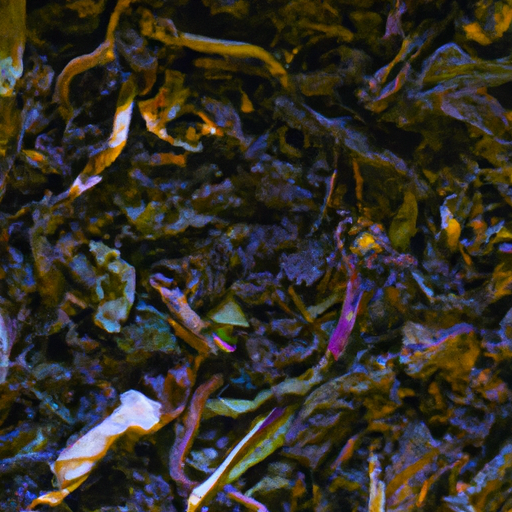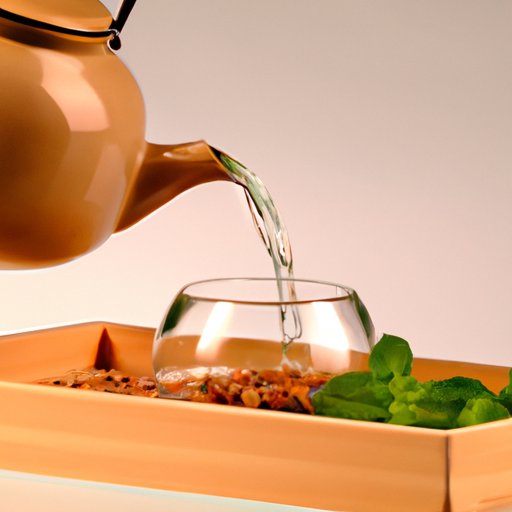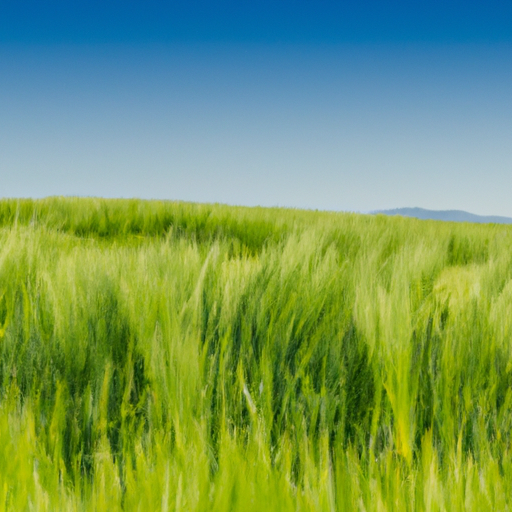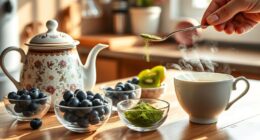I’ve always enjoyed sipping on tea, but my initial experience with barley tea left me unexpectedly delighted. Known as mugicha in Japan, this tea is a favorite in several Asian nations, especially Korea, Japan, and China. Brewed from roasted barley grains, this caffeine-free beverage boasts a distinct nutty and roasted taste, setting it apart from other herbal teas.
The taste of barley tea is not for everyone, but for those who appreciate a more robust flavor, it can be a delightful alternative to traditional tea or coffee. In this article, I will delve deeper into the taste profile of barley tea and explore its nutritional benefits, as well as provide tips on how to enjoy it hot or cold.
Whether you are a seasoned tea drinker or looking to try something new, understanding the taste of barley tea is essential to fully appreciate this unique beverage.
Key Takeaways
- Barley tea has a unique nutty and toasty flavor that is quite different from other herbal teas.
- The taste of barley tea is distinct from other teas and is often described as nutty, earthy, and subtly sweet.
- It’s also less astringent than herbal teas like chamomile or peppermint.
- Its nutty flavor pairs well with a variety of foods, from sweet pastries to savory dishes.
What is Barley Tea?
If you haven’t tried barley tea yet, you’re missing out on the refreshing and nutty taste that will leave you feeling satisfied. Barley tea is a popular drink in Japan, Korea, and China, and it’s becoming more popular in the West due to its health benefits.
Barley tea is made from roasted barley grains and has a subtle, sweet flavor that is perfect for those who want a caffeine-free alternative to coffee or tea. One of the health benefits of barley tea is that it contains antioxidants that help to reduce inflammation and lower the risk of chronic diseases. It’s also a natural diuretic, meaning it can help to flush out toxins from the body. Additionally, barley tea is rich in vitamins and minerals, including magnesium, potassium, and calcium, which are essential for maintaining good health.
Brewing methods for barley tea can vary depending on personal preference, but the most common method is to steep roasted barley grains in hot water for a few minutes. Some people prefer to add other ingredients, such as honey or lemon, to enhance the flavor.
Overall, barley tea is easy to make and can be enjoyed hot or cold. Now that you know what barley tea is and its health benefits, let’s dive into how it’s made.
How is Barley Tea Made?
You can easily brew this comforting and refreshing beverage by toasting a handful of grains and steeping them in hot water. The barley tea brewing process starts with selecting the right type of barley. Different types of barley are used in tea making, including hulled barley, roasted barley, and barley kernels. Each type of barley has a distinct flavor and aroma, which affects the taste of the tea.
To make barley tea, you need to first toast the barley grains in a dry pan over medium heat until they turn a golden brown color. This step is important as it releases the natural oils and flavors in the barley. Next, add the toasted barley to a pot of boiling water and let it simmer for about 15-20 minutes. Strain the liquid through a fine-mesh sieve and let it cool.
You can serve the tea hot or cold, depending on your preference. Barley tea has a mild and nutty taste that is refreshing and soothing. It is a popular beverage in many cultures, including Japan, Korea, and China. Besides its delicious taste, barley tea is also known for its numerous health benefits, including reducing inflammation, aiding digestion, and improving cardiovascular health.
These benefits make barley tea an excellent choice for anyone looking for a healthy and flavorful beverage.
Nutritional Benefits of Barley Tea
I’m excited to discuss the nutritional benefits of barley tea.
Firstly, this tea is low in calories and high in antioxidants, making it a great choice for those looking to maintain a healthy diet.
Additionally, barley tea promotes digestive health and can even aid in weight loss – a win-win for those looking to improve their overall wellbeing.
Low in Calories and High in Antioxidants
Barley tea is like a refreshing breeze on a hot summer day, being low in calories and high in antioxidants. It’s the perfect drink for those watching their weight, as it contains only a few calories per serving. This makes it an excellent alternative to sugary drinks and sodas, which are high in calories and can contribute to weight gain.
Additionally, barley tea is loaded with antioxidants, which are essential for maintaining good health. Antioxidants help to neutralize harmful free radicals in the body, which can cause cellular damage and contribute to chronic diseases.
Brands of barley tea can be found in grocery stores, or you can even make your own at home using simple recipes. Drinking barley tea regularly can help promote digestive health, as it contains fiber and can help regulate bowel movements.
Promotes Digestive Health
Feeling bloated or constipated? Drinking barley tea regularly can help regulate your bowel movements and promote a healthier digestive system.
The digestive benefits of barley tea are due to the presence of fiber and other nutrients that aid in digestion. The tea also contains enzymes that break down complex carbohydrates and proteins, making them easier for the body to absorb.
To brew barley tea, simply add a few tablespoons of barley grains to a pot of boiling water and let it steep for a few minutes. You can also add other herbs or ingredients, such as ginger or lemon, to enhance the flavor and increase the health benefits.
By incorporating barley tea into your daily routine, you can not only improve your digestive health but also enjoy a refreshing and flavorful beverage that helps in weight loss.
Helps in Weight Loss
Losing weight can be easier with the help of regular consumption of barley tea, which aids in digestion and keeps you feeling full longer. Barley tea is a great addition to any weight loss diet as it is low in calories and has been proven to help reduce body weight. Scientific evidence shows that barley tea contains compounds that promote weight loss by reducing the absorption of fat and carbohydrates and increasing metabolism.
Here is a table showing the weight loss benefits of barley tea:
| Benefit | Explanation |
|---|---|
| Low in Calories | Barley tea contains minimal calories, making it an excellent weight loss drink. |
| Reduces Fat Absorption | The compounds found in barley tea help to reduce the absorption of fat in the body. |
| Reduces Carbohydrate Absorption | Barley tea also helps to reduce the absorption of carbohydrates, which can contribute to weight gain. |
| Increases Metabolism | Drinking barley tea can help to increase metabolism, allowing the body to burn more calories throughout the day. |
Incorporating barley tea into your weight loss plan can be a simple and effective way to shed pounds. Its weight loss benefits have been supported by scientific evidence, making it a reliable choice for anyone looking to lose weight. With its numerous health benefits, including aiding in digestion and promoting weight loss, barley tea is definitely a drink worth trying. Moving on to its taste profile, barley tea has a unique flavor that is sure to please the palate.
Taste Profile of Barley Tea
Indulging in a sip of this nutty and toasty tea is like a warm hug on a chilly day. Barley tea, also known as roasted barley tea, is a popular beverage in East Asia, especially in Japan and Korea. Its unique taste profile is often described as nutty, earthy, and subtly sweet.
The taste of barley tea is distinct from other teas. Unlike green tea or black tea, which can be bitter or astringent, barley tea has a smooth and mellow taste. It’s also less astringent than herbal teas like chamomile or peppermint. If you’re looking for a caffeine-free alternative to traditional tea, barley tea’s an excellent choice.
Barley tea can be enjoyed hot or cold, making it a versatile beverage. Its nutty flavor pairs well with a variety of foods, from sweet pastries to savory dishes. Whether you prefer it hot on a chilly night or cold on a hot summer day, barley tea’s a delicious and refreshing beverage that’s sure to satisfy your taste buds.
Hot or Cold: How to Enjoy Barley Tea
Like a chameleon changing its colors, barley tea can adapt to any situation, whether you prefer it hot on a cool evening or cold on a hot summer day. But the question is, which is the better way to enjoy it? Here are some tips to help you decide:
-
Hot vs. Cold: The temperature of barley tea can greatly affect its taste. When hot, the tea has a more intense and nutty flavor, making it perfect for colder weather. On the other hand, when served cold, the tea has a more refreshing taste, making it ideal for hot summer days.
-
Brewing Techniques: Barley tea can be brewed in various ways, depending on your preference. For a hot cup of tea, simply boil water and add the tea bags. Let it steep for a few minutes before removing the bags. For a cold beverage, you can either brew it using hot water and let it cool in the fridge or use room temperature water and let it steep for a longer time.
-
Experiment with Flavors: Don’t be afraid to mix it up and try different flavors. You can add lemon or honey to your hot barley tea for a citrusy kick. For a cold beverage, try adding mint leaves or slices of cucumber to give it a refreshing twist.
-
Remember to Stay Hydrated: While barley tea is a delicious and healthy beverage, it’s important to remember to stay hydrated throughout the day. So make sure to drink plenty of water as well!
Now that you know how to enjoy your barley tea, let’s move on to exploring the various variations of this versatile drink.
Variations of Barley Tea
When it comes to enjoying barley tea, there are plenty of variations to try out. Personally, I love adding a squeeze of lemon or a drizzle of honey to my cup for a hint of sweetness.
Another option is to mix barley tea with other teas, like green tea or chamomile, for a unique flavor combination.
And for those who want to get even more creative, adding fruits or spices like ginger can give your barley tea a whole new dimension of taste.
Adding Lemon or Honey
To enhance the flavor of barley tea, I highly recommend trying a squeeze of lemon or a drizzle of honey. Not only do these additions add a refreshing twist to the drink, but they also bring their own unique benefits to the table.
Here are a few things to consider when choosing between lemon and honey:
-
Lemon adds a bright, citrusy flavor that complements the nutty taste of barley tea. It’s also a great source of vitamin C and antioxidants, which can boost your immune system and help fight off disease.
-
Honey, on the other hand, adds a touch of sweetness that can balance out the slightly bitter taste of barley tea. It also has antibacterial and anti-inflammatory properties, making it a great choice for soothing sore throats and coughs.
-
If you’re trying to watch your sugar intake, lemon may be the better option. It adds flavor without adding any extra calories or sugar.
-
However, if you’re looking for a little extra energy boost, honey might be the way to go. It’s a natural source of carbohydrates and can help give you a quick burst of energy without the crash that comes with caffeine.
Now that you know a little more about the benefits of adding lemon or honey to your barley tea, you can experiment with different combinations to find your perfect blend. If you’re feeling adventurous, you can even try mixing in other teas like green tea or mint for a truly unique flavor experience.
Mixing with Other Teas
After trying barley tea with lemon and honey, I was curious to experiment more with this refreshing beverage. That’s when I discovered that barley tea can be mixed with other teas to create unique flavor pairings. Some of the popular options include green tea, mint tea, and chamomile tea.
The brewing technique for mixing teas is simple. Just brew the barley tea and the other tea separately and then combine them in the desired proportions. For example, to create a green tea and barley tea blend, I would brew each tea separately and then mix them in equal parts. The result is a delicious and healthy beverage with a unique flavor profile.
As I continued to explore the world of barley tea, I also found that it can be mixed with different spices and fruits to create exciting variations. But before I delve into that, let me first tell you about my experience with mixing barley tea with green tea.
Adding Fruits or Spices
By infusing slices of fresh ginger and a splash of lemon juice, the warm and spicy aroma of barley tea transforms into a soothing elixir perfect for a chilly evening.
The addition of fruits or spices can create a variety of fruit-infused variations or spicy twists that enhance the flavor of this popular tea.
Infusing barley tea with fruits like peach or strawberry adds a sweet and refreshing flavor, while adding cinnamon or cardamom can give it a warm and cozy feel.
These fruit-infused variations and spicy twists are popular in different cultures, each with their own unique twist on the classic barley tea.
In Korea, roasted barley tea is mixed with corn silk and brewed for a refreshing summer drink.
In Japan, mugicha, or barley tea, is served chilled for a refreshing summer beverage.
Barley tea has become a staple in many cultures, and its versatility allows it to be enjoyed in many different ways.
Barley Tea in Different Cultures
Barley tea is a popular beverage in many cultures, with each culture adding their own unique twist to the taste. In Korea, it is known as ‘boricha’ and is often served cold with a sweetener. It is a staple drink during summer months as it is believed to cool the body down. In Japan, it is called ‘mugicha’ and is typically served hot or cold with a pinch of salt. It is believed to aid digestion and is often served after meals. In China, it is known as ‘damaicha’ and is often served in restaurants as a complimentary drink. It is made by boiling roasted barley with water and is believed to have detoxifying properties.
To give you a better idea of how barley tea is enjoyed in different cultures, here’s a table that highlights some of the key differences:
| Country | Cultural Significance | Brewing Method | Serving Temperature | Flavor |
|---|---|---|---|---|
| Korea | Popular summer drink | Roasted barley steeped in hot water | Cold | Slightly sweet |
| Japan | Digestive aid | Roasted barley steeped in hot water | Hot or cold | Nutty, slightly bitter |
| China | Complimentary restaurant drink | Roasted barley boiled in water | Hot or cold | Mild, earthy |
As you can see, each culture has its own unique way of preparing and enjoying barley tea. Whether you prefer it hot or cold, sweet or savory, there’s a barley tea out there that’s sure to satisfy your taste buds.
So, where can you buy barley tea? Stay tuned for the next section where I’ll be sharing some tips on where to purchase barley tea and how to make it at home.
Where to Buy Barley Tea
As I mentioned earlier, barley tea is a popular beverage in many cultures across the world. It’s a refreshing and healthy alternative to other sugary drinks.
Now, let’s talk about where to buy barley tea. If you’re looking for convenience, you can always buy barley tea online. There are numerous online retailers that sell a wide variety of barley tea brands. You can choose from different flavors, including roasted barley tea, green barley tea, and more. Some of these online options also offer free shipping and discounts for bulk purchases.
If you prefer to shop locally, you can visit your nearest Asian grocery store or health food store. These stores typically carry different brands of barley tea, and you may even find loose barley that you can use to make your own tea at home. Additionally, you can also check out specialty tea shops or cafes that serve barley tea.
There are many options available when it comes to buying barley tea. Whether you prefer to shop online or in person, you can easily find a retailer that suits your needs. And if you’re feeling adventurous, you can even learn how to make barley tea at home.
Transitioning into the subsequent section, making your own barley tea is a simple and fun process.
How to Make Barley Tea at Home
You can easily create your own refreshing and healthy alternative to sugary drinks by making barley tea at home using simple ingredients. Barley tea is a popular beverage in Japan, Korea, and other parts of Asia for its unique taste and health benefits. Unlike other teas that contain caffeine, barley tea is a caffeine-free option that can be enjoyed any time of day.
To make barley tea at home, all you need is barley grains and water. You can add other ingredients like honey or lemon to enhance the flavor, but these are optional. The process is simple: rinse the barley grains, toast them in a dry pan until fragrant, then boil them in water for about 15 minutes. Strain the tea and let it cool before serving over ice or hot.
Barley tea is not only a delicious and healthy drink on its own, but it can also be used as a base for cocktails. Its nutty flavor pairs well with citrus and herbs, making it a versatile ingredient for mixologists. Try adding barley tea to your favorite cocktail recipes for a unique twist on classic drinks. Whether you’re looking for a caffeine alternative or a new ingredient to experiment with, barley tea is definitely worth a try.
Frequently Asked Questions
Does barley tea have caffeine?
Well, let me tell you, caffeine content in beverages can be a bit tricky to predict. Some drinks that seem like they would be packed with caffeine surprisingly have little to none, while others that seem mild can leave you bouncing off the walls.
When it comes to barley tea, the caffeine content is actually pretty low. In fact, some people even drink it as a caffeine-free alternative to coffee or black tea.
As for health benefits, there’s some evidence that barley tea may help with digestion and even have anti-inflammatory properties. However, more research is needed to confirm these potential benefits.
All in all, if you’re looking for a refreshing and low-caffeine drink option, barley tea might just be your new go-to.
Can barley tea be sweetened?
Yes, barley tea can definitely be sweetened! There are a variety of sweetening options you can use, depending on your taste preferences.
You can add honey, sugar, or even maple syrup to your barley tea to give it a sweeter taste. Some people prefer to add a touch of milk or creamer to their barley tea to make it creamier and smoother.
Personally, I like to add a bit of honey and lemon to my barley tea, which gives it a refreshing and tangy taste. The great thing about barley tea is that it has a subtle, nutty flavor that pairs well with a variety of sweeteners, so you can customize it to your liking.
Is barley tea good for weight loss?
Barley tea is a popular beverage in many parts of the world, and many people are interested in its potential benefits for weight loss. As someone who’s tried barley tea and done some research on its properties, I can say there’s evidence to suggest it could have a positive impact on weight management.
For example, barley tea is low in calories and contains compounds that may help regulate blood sugar levels. This could reduce cravings and promote feelings of fullness. Additionally, drinking barley tea before meals may help slow down digestion and absorption of carbohydrates. This could further support weight loss efforts.
Of course, it’s important to remember that no single food or drink can magically make you lose weight. But adding barley tea to your diet as part of a healthy, balanced lifestyle could be a smart choice.
As for the best time to drink barley tea, I find that it’s a refreshing and soothing beverage to enjoy throughout the day. But some people prefer to drink it before meals to take advantage of its potential appetite-suppressing effects. Ultimately, it’s up to you to experiment and find what works best for your body and your lifestyle.
How long does barley tea last?
When it comes to storing barley tea, it’s important to keep it in an airtight container to prevent any moisture from getting in. This will help prolong the shelf life of the tea, which typically lasts anywhere from 6 months to a year.
It’s also a good idea to store the tea in a cool, dark place to prevent any exposure to sunlight or heat. If you notice any signs of mold or an off odor, it’s best to discard the tea.
Overall, taking proper precautions when storing barley tea can help ensure that it stays fresh and delicious for as long as possible.
Can barley tea be used for cooking or baking?
Cooking with barley tea is a wonderful way to add a unique flavor to your dishes. It has a nutty, almost toasty taste that can be used to enhance savory dishes or add a subtle sweetness to desserts.
I love using it in marinades for meats or in stews for a rich, hearty flavor. The benefits of using barley tea in recipes go beyond just taste. It’s a great source of antioxidants and can aid in digestion. Plus, it’s low in calories and can be a great alternative to other sweeteners.
Overall, incorporating barley tea into your cooking can add depth and complexity to your dishes while also providing health benefits.
Conclusion
I hope this article has provided you with a comprehensive understanding of barley tea, from its origins and preparation to its nutritional benefits and taste profile. Whether you prefer it hot or cold, there are many ways to enjoy this refreshing beverage.
Experiment with different variations, such as adding honey or lemon juice, to find your perfect cup of barley tea. In different cultures, barley tea is consumed for various reasons, including its digestive and detoxifying properties.
It’s readily available at many specialty stores and online retailers, or you can easily make it at home with just a few simple ingredients. So why not give barley tea a try and experience its unique flavor and health benefits for yourself?

